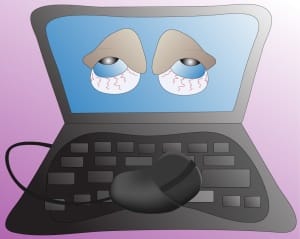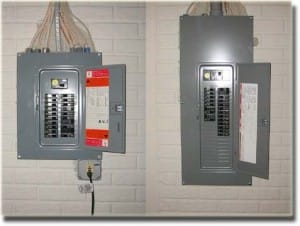Leave MS Windows Running
 Leave Microsoft Windows running: So the good news is that your Microsoft Windows computer doesn’t get tired – you can leave it running and it’ll keep working for you for many years. Most computers have only two moving parts – the spinning hard drive and the cooling fan – the latest computers only have the cooling fan (they have a solid-state hard drive). These moving parts are subject to wear and tear, but their service lives are very long.
Leave Microsoft Windows running: So the good news is that your Microsoft Windows computer doesn’t get tired – you can leave it running and it’ll keep working for you for many years. Most computers have only two moving parts – the spinning hard drive and the cooling fan – the latest computers only have the cooling fan (they have a solid-state hard drive). These moving parts are subject to wear and tear, but their service lives are very long.
There are two very good reasons to leave your computer running all the time:
- Microsoft sends out updates in the middle of the night. If your computer is turned off, you won’t get those updates.
- The most wear and tear on a spinning hard drive happens while it is starting up and when it is shutting down. If left spinning all the time, the wear is very minimal.
 If you are the type of person who likes to do your own computer maintenance and updates, you might have the ‘automatic updates’ feature turned off. So the first reason won’t be important to you. But the second reason should be important to everyone, and the argument on ‘going green’ and saving electricity is a bit more complicated than simply turning off the computer. The reason is that a spinning hard drive sips very little electricity when left running 24/7/365. The big power hog on your computer is that bright screen you’re looking at. So if you want to be green, just leave the screen turned off anytime you’re not using it.
If you are the type of person who likes to do your own computer maintenance and updates, you might have the ‘automatic updates’ feature turned off. So the first reason won’t be important to you. But the second reason should be important to everyone, and the argument on ‘going green’ and saving electricity is a bit more complicated than simply turning off the computer. The reason is that a spinning hard drive sips very little electricity when left running 24/7/365. The big power hog on your computer is that bright screen you’re looking at. So if you want to be green, just leave the screen turned off anytime you’re not using it.
 If you still aren’t convinced, think about how much in natural resources it takes to create a hard drive – this is a whole lot more than the resources it takes to leave your computer running. A modern hard drive that is left spinning should last you 5-10 years, whereas one that’s turned off and on all the time may die after 2-3 years (if it lasts 5 years you’ll be lucky). A crashed hard drive is the number one reason consumers replace their computers these days, and also causes a lot of angst (if they neglected to backup their personal files, photos, music and such). So when all’s said and done, it’s better for you and the environment to just leave your computer’s hard drive always spinning.
If you still aren’t convinced, think about how much in natural resources it takes to create a hard drive – this is a whole lot more than the resources it takes to leave your computer running. A modern hard drive that is left spinning should last you 5-10 years, whereas one that’s turned off and on all the time may die after 2-3 years (if it lasts 5 years you’ll be lucky). A crashed hard drive is the number one reason consumers replace their computers these days, and also causes a lot of angst (if they neglected to backup their personal files, photos, music and such). So when all’s said and done, it’s better for you and the environment to just leave your computer’s hard drive always spinning.
 You may have also been indoctrinated into using Sleep Mode on your Windows PC, but I can’t tell you how many times I’ve had to repair damage done by this dumb feature. I’m not saying that Sleep Mode as a feature is dumb, but that the way it has been designed to work in Windows is dumb. Modern computers and the programs that run on them often have parts that run all the time or on a schedule (like auto-update checking). These features are designed to work on a running computer, and Sleep Mode interferes with how they work. The result is (usually minor) program errors – often harmless in and of themselves, but they accumulate until your computer slows down and stops working reliably.
You may have also been indoctrinated into using Sleep Mode on your Windows PC, but I can’t tell you how many times I’ve had to repair damage done by this dumb feature. I’m not saying that Sleep Mode as a feature is dumb, but that the way it has been designed to work in Windows is dumb. Modern computers and the programs that run on them often have parts that run all the time or on a schedule (like auto-update checking). These features are designed to work on a running computer, and Sleep Mode interferes with how they work. The result is (usually minor) program errors – often harmless in and of themselves, but they accumulate until your computer slows down and stops working reliably.
The other bad thing about Sleep Mode is that it leaves some things energized (like the RAM and processor) which causes heat. So for laptops, Sleep Mode can be dangerous: if you put a laptop into a bag or carrying case while in Sleep Mode, the heat will build up until the fan comes on. But there’s no place in your bag for the fan to send the heat, so it continues to build up and can cause physical damage to your laptop. So please, never put your laptop into a bag unless it’s either shut down, or in Hibernate Mode. The easiest way to deal with this is to adjust your Power Options.
Most Windows computers are set by the factory to use a ‘balanced’ set of power options. On laptops this includes setting the hard drive to power down after a certain period of inactivity. This is as bad as shutting off and turning on the computer in terms of wear and tear, and worse in terms of how running programs on your computer need access to the hard drive (it’s all about timing). Again, this causes more problems, so this should be disabled as well.
Please, adjust your power options to avoid both Sleep Mode and powering down the hard drive. Visit your Windows control panel and adjust these options. Here’s how:
 Click the Windows 7 Start button and type power options and then hit the enter key. That opens the Power Options window, and one of the items on the list will have the radio button selected. You may have a “balanced” option selected, or one specific to your brand of computer. You should choose the “High Performance” option, and then click the ‘Change settings’ link to the right.
Click the Windows 7 Start button and type power options and then hit the enter key. That opens the Power Options window, and one of the items on the list will have the radio button selected. You may have a “balanced” option selected, or one specific to your brand of computer. You should choose the “High Performance” option, and then click the ‘Change settings’ link to the right. The next window shows the most common power options, so click on the link ‘Change advanced power settings’. That opens a new smaller window.
The next window shows the most common power options, so click on the link ‘Change advanced power settings’. That opens a new smaller window.- Here’s where you can make all the changes to your power options. You may have to first click the link ‘Change settings that are currently unavailable’ if your computer is set for stringent User Account Controls.
 Ok, now this window has a lot of choices you can make. You’ll need to click the little + box on the left to expand items. Here are the most important items to adjust:
Ok, now this window has a lot of choices you can make. You’ll need to click the little + box on the left to expand items. Here are the most important items to adjust:
- set the hard drive to not power down at all (set for 0 minutes – aka ‘never’)
- set sleep mode to not use it (set for 0 minutes – aka ‘never’). This goes for both battery and electric power.
- set power buttons and lid > lid close action to hibernate when on battery power and to ‘do nothing’ on electrical power. This ensures your computer goes into hibernation mode before you jam it into a bag for transport (keeping it from overheating like it would if it was in sleep mode), and keeps running if you close the lid while on electrical power – lets it get those midnight updates.
- sleep button action – set it to do nothing on both battery and electrical power.
- for the display options, set to turn display off after 5 minutes of inactivity on battery power and 10 minutes of inactivity while on electrical power. This is your ‘going green’ setting.
If by chance you’re a Mac user, none of the above applies. Apple implements Sleep Mode just fine. And if you have a newer computer that uses a solid-state hard drive, you don’t have to worry as much either, since there’s no spinning hard drive to wear out.
This website runs on a patronage model. If you find my answers of value, please consider supporting me by sending any dollar amount via:
or by mailing a check/cash to PosiTek.net LLC 1934 Old Gallows Road, Suite 350, Tysons Corner VA 22182. I am not a non-profit, but your support helps me to continue delivering advice and consumer technology support to the public. Thanks!








